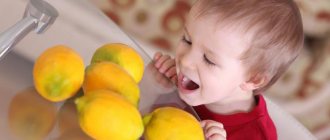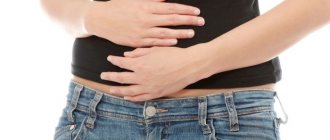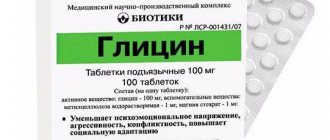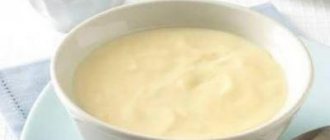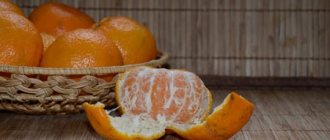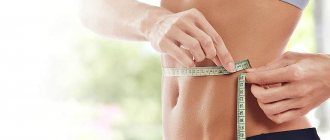Is it possible to take vitamin D during breastfeeding?
Vitamin D belongs to complex substances - prohormones, which are considered precursors of hormones. D2 enters the body with food, and D3 is formed under the influence of sunlight.
Vitamin D includes several active substances:
- ergocalciferol (aka D2);
- cholecalciferol (D3);
- calciferol.
The substance is found in food and is formed under the influence of ultraviolet radiation.
Together they provide:
- metabolic processes in tissues and organs;
- absorption of calcium and phosphorus from food in the duodenum;
- participation in cell reproduction;
- synthesis of certain hormones;
- general strengthening effect;
- energy, vitality.
In 1914, the discovery of a certain active substance in fish oil by biochemist Elmer McCollum finally solved the acute problem of childhood rickets. Veterinarian Edward Mellenby found that dogs that are supplemented with fish oil do not suffer from rickets. To make sure which substance is such a good disease prevention, in 1922 an experiment was conducted with the same fish oil, from which the previously discovered vitamin A had been previously removed. All dogs that received it were cured of rickets. At that time, it was the fourth vitamin discovered by science, and it received the name of the fourth letter of the Latin alphabet. It was later proven that the body can produce it independently under the influence of the sun.
We recommend reading: What are the benefits of fish oil in capsules, instructions for use, reviews
Breast milk contains a small amount of vitamin D, but it is enough for the baby. If a child with breastfeeding does not have enough vitamin, it is solely because the mother does not receive it in full. You can take additional vitamin D during breastfeeding only on the recommendation of a doctor, if there are indications. To maintain levels in the body, you will need daily sunbathing for 20 minutes a day and an appropriate diet containing the maximum of nutrients. Such products include:
- fermented milk products - butter and cheese;
- oatmeal;
- parsley and potatoes;
- liver;
- fatty fish;
- caviar;
- meat;
- eggs (yolk);
- some types of mushrooms.
We recommend reading: Potatoes: beneficial properties and contraindications
To speed up absorption, you should include in your diet foods high in phosphorus, calcium and a number of vitamins.
Important! If a mother with breastfeeding receives a sufficient amount of vitamin D from her diet, then it makes no sense to give them additionally.
Experts note that vitamin D can be taken while breastfeeding, but only if necessary.
Where to get vitamin D
You can increase the amount of vitamin D during lactation by using special multivitamin complexes and introducing various products containing this element into the menu. In addition, both the baby and the mother need to walk more often, take sunbathing and sunbathe a little.
Interestingly, sunbathing for 10-15 minutes a day allows you to replenish the daily requirement of this element. The most effective and safest is the sun in the morning before 10-11 am and in the evening after 16-17 hours. The sun's rays fill the body with useful vitamins and charge with energy, while overheating and burns are eliminated.

Vitamin D is contained in dairy products and eggs, fish and meat, and mushrooms. You will find small amounts of the element in fermented milk products, parsley, potatoes and oatmeal. However, remember that not every product is safe for a nursing mother to consume. For example, mushrooms are prohibited for at least the first six months of lactation and for children under three years of age. Choose foods that are approved for breastfeeding.
And in order to enhance and accelerate the absorption of this element and achieve the full effect, the diet also includes foods with a high content of calcium and phosphorus, vitamins A, E, C and group B. In addition, the combination of vitamins D and K, which controls the calcium content, works great in the body and eliminates overdose and poisoning.
Is vitamin D passed through breast milk?

Vitamin D is transferred to the baby through mother's milk during breastfeeding
The main source of vitamin D for a newborn is the reserves obtained in the mother's womb. Therefore, it is important to make sure that the mother receives enough doses during pregnancy. The reserves should be sufficient for the first 3-4 months after birth during breastfeeding, even if the baby does not spend much time in the sun. Adding vitamin D to a nursing mother’s food significantly increases its amount in breast milk during breastfeeding. If she does not have a deficiency during breastfeeding, then the milk will always contain the optimal amount of the beneficial substance. This has been confirmed by domestic and foreign experts during many years of research on nursing mothers.
Attention! Breastfed children receive only part of the required amount of vitamin D from their mother's milk, the rest they absorb with the help of sunlight.
It is possible that a number of problems may interfere with the absorption of the vitamin in the mother's body during breastfeeding. For example, being overweight, certain medications, difficulty absorbing fat from food. However, these conditions do not interfere with the transfer of vitamin D from the blood into breast milk when feeding a baby.
Are there any differences in taking vitamins when breastfeeding and bottle-feeding?
Children under one year of age should take additional calciferol, regardless of the type of feeding. Since some manufacturers include the required amount of vitamin D in the formula during artificial feeding, in order not to cause an excess of it, you should consult a doctor. Based on the composition, the doctor must determine whether there is a need for additional intake of this microelement beneficial to the body.
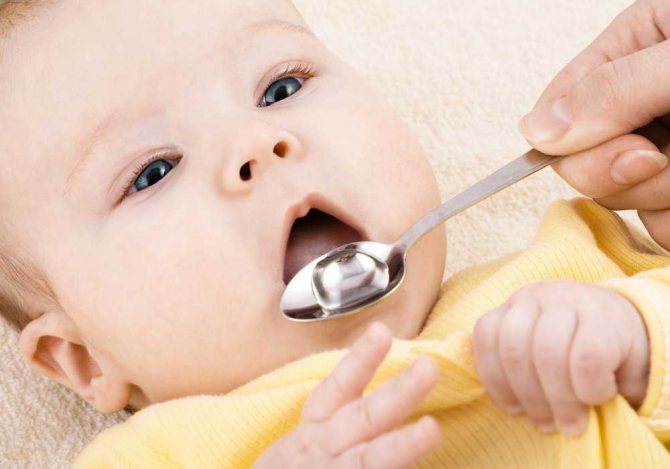
Do you need vitamin D while breastfeeding?
Many believe that mother's milk provides the baby with all the necessary nutrients and there is no need to take any additional vitamins. In fact, this is true, but some substances are not found in sufficient quantities in breast milk. A breastfed baby does not receive enough calciferol through mother's milk. If the mother does not take additional vitamins, the necessary foods, or the baby does not get enough sunlight, then the doctor prescribes a prophylactic dose of 400 IU per day. Therefore, if a mother doubts whether calciferol should be given while breastfeeding, then she should ask the pediatrician what dose is recommended for the baby and when additional use can be abandoned.
Beneficial properties of vitamin D for nursing
After childbirth, especially in those women who breastfeed their baby, their reserves of nutrients and energy are depleted. It is during the feeding period that doctors recommend introducing microelements and active substances into the diet. Taking vitamin D during breastfeeding is important, as it affects all basic life processes. In addition to strengthening and restorative properties, vitamin D has a number of effects on mothers during breastfeeding:
- immune support;
- prevention of oncology, sclerosis, diabetes mellitus, some pathological processes in the joints;
- slowing down the aging process, improving the condition of skin and hair, tissue regeneration;
- positive effect on the functioning of the pancreas, thyroid gland, visual organs, and nervous system;
- strengthening the skeleton, teeth, nails;
- normalization of metabolic processes, metabolism during breastfeeding.
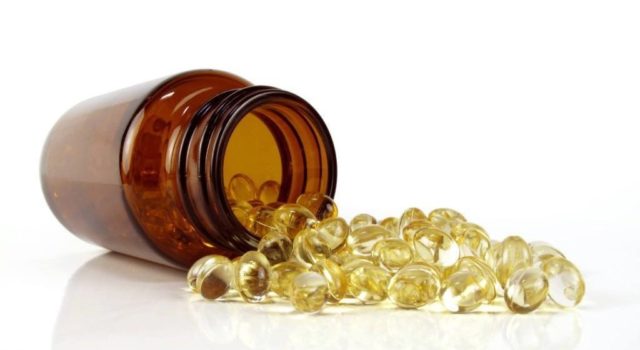
The drug should be taken strictly according to instructions
However, the main function of vitamin D during breastfeeding is the prevention of rickets in newborns. It can be recognized by the deformation of the baby’s bones, excessive sweating, baldness, and muscle weakness. It is worth noting that the disease slows down the development of the entire organism as a whole.
Indications for the use of vitamin D in breastfeeding mothers
When breastfeeding, the mother's nutrients are used to enrich the milk, so the woman will need additional vitamin D for her own body's needs. Taking the drug is indicated:
- when childbirth and the period of initiation of breastfeeding occurred in winter and early spring;
- with constant stress and emotional stress;
- mother and child living in regions with insufficient solar activity;
- lack of breast milk during natural feeding;
- pathology of the skin, nails and excessive tooth decay in the mother;
- mother's restriction during breastfeeding in many foods due to allergies in the child.
If a woman does not have such health problems, it is enough for her to adhere to a proper diet and monitor her health, especially during breastfeeding.
Warning! It must be remembered that active substances can cause harm. Too much can be even more dangerous than too little. This manifests itself as an allergic reaction, intoxication of the body, and liver dysfunction.
Anna Mikhnina's blog
Some time ago I wrote this article for the Yu-aesthetic project website on VKontakte. Now I decided to duplicate it here.
A woman has many reasons to worry about her baby's well-being when she is breastfeeding. After all, the health and successful development of the baby directly depends on the quality of her milk. And these maternal experiences are successfully parasitized by numerous myths, often commercially beneficial to sellers of various services and goods.
This article will consider one of the myths that arose outside of connection with breastfeeding, but related to massage and the issue of metabolism in the human body, but, as it turned out, is very exciting for nursing mothers.
There is an opinion, actively disseminated by massage specialists and some physiotherapists, that massage (especially intense) has the effect of a detox procedure, helps to accelerate the removal of various toxins from the tissues of our body, and therefore temporarily increases their concentration in the blood after a massage session. In this regard, it is recommended to drink a lot of water during and after the massage to speed up the flushing of released toxins from the body.
As you know, breast milk is produced from the blood and reflects its current composition with a small time lag. This raises concerns about whether these toxins released by massage end up in breast milk, and whether they could harm the baby? Is it dangerous for nursing mothers to undergo massages and make cosmetic wraps aimed at increasing blood flow and dispersing stagnation of intercellular fluid in certain areas of the body?
I have received questions about how long after a massage can I breastfeed without fear of waste and toxins getting into my breast milk? And what types of massage are allowed during breastfeeding?
I will start by answering the questions, and then I will provide reasons to refute the myth that gave rise to them.
So, is massage safe for breastfeeding?
1) any types of massage and cosmetic wraps are allowed during breastfeeding.
What is important to remember is the need to thoroughly wash off cosmetic substances used for procedures from the body, and most importantly, from your hands. Many of them are very difficult to wash off! Often the baby does have a reaction in the form of local skin manifestations after the mother, for example, applies a wrap with anti-cellulite cream. The reason is that the cream was poorly washed off the hands. The mother touched the child and his skin did not like this aggressive cream.
It is also possible for the child to have a reaction as a result of inhaling some substances used by the mother (red pepper powder, bodyagi, dust from dried kelp, etc.). Therefore, mix the compositions for wraps and scrubs away from the child and the room where he spends most of his time, and clean the preparation area well with a damp cloth.
Do not use substances with a strong odor. Poorly washed honey from the mother's skin can also cause irritation or an allergic reaction in the child if, for example, during feeding the mother practices skin-to-skin contact with the child.
No superficially applied cosmetic substances are absorbed into the systemic bloodstream and do not penetrate into breast milk!
2) you can breastfeed your baby immediately after the massage. There is no effect of releasing toxins into the blood!
Massage also does not have a negative effect on the amount of milk. There are also techniques for special breast massage to relieve swelling (engorgement) of the mammary glands during lactostasis and mastitis.
What are we afraid of? As a result of massage, some toxins are released from certain reservoirs in the body and enter the bloodstream, and therefore into breast milk.
Questions: where are these toxins deposited, which can be extracted through massage? And what kind of dangerous substances are these? Does the intensity of the massage affect the amount of these wastes released?
Answers:
1) What are the notorious toxins in the human body? » Waste is a pseudoscientific term common in alternative medicine, meaning harmful substances from food and the environment that accumulate in the body. Some representatives of alternative medicine consider the accumulation of toxins to be one of the factors of deteriorating health.” Wikipedia.
The question of what could be such toxic substances and cause any health problems is complex and controversial, since many substances, depending on their concentration, can have both beneficial and adverse functional effects. There are exogenous and endogenous toxins. The former enter the body from the outside, the latter are the result of an excess of products of normal or perverted metabolism or cellular reaction.
Any substance in nature can be poisonous in excessive quantities.
Therefore, in medicine it is customary to talk about intoxication with a specific substance. Examples of negative conditions caused by endotoxins: hyperbillirubinemia, azotemia, thyrotoxicosis (excess of thyroid-stimulating hormone), etc. Most of the substances that are metabolites of processes occurring in the body have not been identified at all. One of the classifications proposed in the scientific literature is the identification of 3 groups of toxic substances depending on the method of their occurrence and the mechanism of elimination from the body [1]: - substances with molecular sizes less than 10 nm. They are produced and accumulate in the bloodstream as a result of metabolic disorders (endotoxins). The main physiological route for eliminating such toxins is the renal system. Through the kidneys, the body gets rid of water-soluble, mainly non-ionized substances [2]. - substances with molecular sizes of 10–200 nm. They are formed as a result of infectious processes (exogenous bacterial toxins). The main physiological route for eliminating these substances from the body is the hepatointestinal system: intestines, liver, spleen [3]. In this way, fat-soluble substances of medium and high molecular weight are removed from the body [4]. — substances with molecular sizes greater than 200 nm (bacteria, viruses, fungi, antibodies and chemical compounds of high molecular weight, including proteins)[5]. Their appearance in the bloodstream is the result of malabsorption. [2] These substances damage the integrity of cells in various organs. Their excretion from the body occurs predominantly through the macrophage-lymphocytic system [4].
It is important to know one feature of the lymphatic system: it does not have a closed loop of lymph movement and a driving pump, like the circulatory system. Lymph in the body always moves in only one direction from bottom to top to the portal vein, where the large lymphatic duct flows. The speed of lymph flow changes all the time, periods of movement alternate with periods of stagnation. The frequency and duration of the former affects the quality of cleansing the body of toxins, while stagnation has a negative impact on health (visually lymph stagnation can be determined by swelling of the face and/or limbs).
The network of lymphatic vessels consists of superficial and deep ducts and nodes. The only way lymph moves is through friction of the lymphatic ducts due to contraction of the surrounding muscles, as well as shocks of the diaphragm during breathing. The deep lymphatic vessels are large and run along the deep blood vessels.
It is very difficult to influence them from the outside in order to speed up the upward movement of lymph. The effect is mainly on the superficial lymphatic network and soft tissues, from where excess intercellular fluid is expelled into the lymphatic system and swelling subsides. Therefore, the effectiveness of so-called lymphatic drainage massages is not great.
In any case, massage does not have any detox effect or the effect of releasing toxins from the body’s “storages” - in this case, the lymph nodes, where filtering and neutralization of toxins occurs. Almost pure lymph comes out of the lymph nodes, which is then sent into the bloodstream for final purification by the liver.
With exhaled air, gases and volatile substances (carbon monoxide, ethyl ether, chloroform, acetone, gasoline, hydrocarbons, alcohols) are removed from the body through the lungs (inhalation route) [4]. Small amounts of non-electrolytes (ethyl alcohol, acetone, arsenic compounds, bromides, quinine, etc.) are released through the skin and endocrine glands (sweat, sebaceous, salivary, milk, etc.). The role of this pathway for cleansing the body of toxins is very minor [2].
Sources of endotoxins [6]:
- products of normal metabolism in high concentrations (lactate, pyruvate, nitrogen, uric acid, urea, creatinine, bilirubin glucuronide, etc.);
- substances that are excessively formed during perverted metabolism (ketones, aldehydes, alcohols, carboxylic acids, ammonia, etc.);
— decay products of cells and tissues from foci of tissue destruction (tumors, injuries) and/or from the gastrointestinal tract in case of disruption of the barrier functions of membranes (lipases, lysosomal enzymes, cationic proteins, myoglobin, indole, skatole, phenol, etc.);
-components and effectors of the body’s regulatory systems in pathological concentrations: activated enzymes (lysosomal, proteolytic, activation products of the kallikreinin cascade, blood coagulation and fibrinolysis systems);
- inflammatory mediators, biogenic amines, cytokines, prostaglandins, leukotrienes, acute phase proteins and other biologically active substances;
— active compounds formed during lipid peroxidation;
— microbial toxins and other factors of pathogenicity of microorganisms (pathogenic, opportunistic, non-pathogenic);
— immunoforeign products of cellular decay, antigens and immune complexes-aggressors.
The processes of formation (in the case of endotoxemia), deposition, neutralization and removal of toxic substances from the body are continuous. There are always various toxins present in the body of any person. In healthy people who are not actively exposed to aggressive environmental factors, toxins are also present in certain physiological quantities.
Even after going through various cleansing and detox procedures, we will not be able to get rid of them completely (see the nature of endotoxins above and given the ability of some exotoxins to accumulate, including in the bones, with a very slow process of release from there and elimination from the body).
If a person is not completely healthy and there is a disruption in the functioning of the main toxin elimination systems, then harmful metabolic disorders, tissue integrity and organ function occur. In other words, it is impossible not to notice the symptoms of long-term intoxication. And having identified it, it is necessary to urgently begin to fight it as a life-threatening condition.
To achieve this, there is a whole range of measures in medicine:
-mechanical movement of toxic substances using gastric lavage, enema and intestinal lavage, removal of purulent and necrotic masses, blood transfusion, dialysis, plasmapheresis, hemoxygenation, liquor sorption, etc.
— physiological effects that mobilize toxins: physical activity, diets, hormonal correction, taking diuretics, enterosorbents, antidotes;
- chelation or introduction of complex-forming agents.
It is extremely difficult to cause intoxication of the body by measures aimed at removing toxins, especially when the organs of the excretory systems are functioning normally. After all, it is these organs themselves (liver, kidneys, spleen) that set the rate of release of toxins from trap deposits (various body tissues and cells of the immune system), where they are stored almost asymptomatically, without affecting well-being and health in general. And these organs in a healthy body do not work at the limit of their capabilities.
Therefore, if the amount of incoming toxins increases and the “storages” that neutralize them become overfilled, the organs of the excretory systems intensify their work. The same thing happens when accelerating the emptying of deposit traps due to targeted effects on the body (for example, the release of toxins from adipose tissue when losing weight). You can overload the excretory system if you use chemical methods for detoxification rather than physical ones, which require additional loading of various substances into the body.
This is in particular a chelation method aimed at removing heavy metal salts. Therefore, it is carried out only under strict medical supervision.
In the human body, the following “repositories” of toxins can be distinguished: (1) internal organs, including lymph nodes, (2) skin and muscles, (3) adipose tissue, (4) connective tissue and bones.
The speed at which toxins are removed from these “storages” varies. The bones and fatty tissues are the slowest to clear. But it is also practically impossible to shake out a large number of toxins accumulated by these organs at once, using various methods of detoxification, in any case, with the goal of improving, and not undermining, one’s health, and following the physiological pace of decay and renewal of organ tissue (fat does not burn instantly, and the bone does not immediately give up all its mineral salts with heavy metals).
2) What does massage do? Regardless of the type and name of the massage, it primarily performs the function of improving the microcirculation of body fluids in the massaged tissues. In order to increase blood flow in the muscles and ligaments, intense power massage is required.
Cosmetic massages do not affect muscle tissue. But the skin and subcutaneous fatty tissue, devoid of blood vessels, do not provide a significant release of toxins.
As a result, even by filling our bloodstream with some additional volume of toxins from the massaged organs, we gave a signal to the liver and kidneys to work faster, since the level of various substances, including circulating toxins of various origins, is maintained constant by these organs in a healthy body. Therefore, we in no way provoked poisoning in ourselves if we did not add external toxins during the massage process!
However, the most effective way of detoxification, as you might guess, is physical activity, which increases the metabolism of the entire body as a whole. Exercise and intense additional sweating in the sauna (self-cleaning of the lymphatic system) are used as a natural, safe and very effective way to detoxify the body when treating the consequences of drug addiction [7].
The intensity of the release of toxins from “storages”, and everywhere in all tissues of the body, during active physical activity is tens of times greater than that during a massage, no matter how hard and long it may be. But the idea that after playing sports we are poisoned, our blood is literally poisonous (and breast milk is at risk of the same contamination [8]) and urgent detoxification is required, does not occur to anyone. And how then do professional athletes stay alive (who, by the way, are also regularly subjected to power massage)?
The conclusion suggests itself. There is no release of toxins into the blood during the massage. Massage is not a detoxification event [9]. For this reason, there is no need to actively drink water after a massage to speed up cleansing of the body [10].
Let us now consider separately cosmetic procedures
The amount of a substance that penetrates the skin is proportional to the area of contact between the substance and the skin. As the area increases, the amount of substance absorbed also increases. When acting in the form of an aerosol, the area of contact of the applied substance with the skin increases.
The anatomical location of the skin area in contact with the substance greatly influences the rate of resorption (Table 1). According to research results, the skin of the scrotum and armpit has the greatest absorption capacity.
Table 1. Rate of penetration of parathion (a very toxic pesticide) through the skin of various areas of the human body *
Anatomical area // % of absorbed substance from the applied amount, over 5 days Outer surface of the forearm 8.6 Scalp 32.2 Palm 11.8 Knee area 13.8 Abdomen 18.5 Rear of the hand 21.0 Forehead 36.3 Armpit 64.0 Scrotum 100.0
* VOLUME 4, ART. 119 (p.) // March, 2003. FUNDAMENTALS OF TOXICOLOGY, S. A. Kutsenko, St. Petersburg, 2002
As can be seen from the table, substances applied to intact healthy skin are generally poorly absorbed. Of course, absorption depends on the chemical structure of the substance. However, in general, if the exposure time on the skin is limited to a couple of tens of minutes, the chemical aggressiveness of the substances is not great, and the quality of subsequent cleansing of the skin is high, then there is no need to talk about deep penetration into the body and the entry of any substances into the blood. This means that these substances cannot pass into breast milk.
literature: [1] Kozinets G.P., Sheiman B.S., Osadchaya O.I. Endotoxicosis diagnostic system / Materials of the III Interregional Scientific and Practical Conf. anesthesiologists. - Lugansk, 1999. - P. 105-106.
[2] Kostyuchenko A.L. Active detoxification // World of Medicine. - 2000. - No. 9–10. — From 25-27
[3] Nagornaya N.V., Bordyugova E.V., Dubovaya A.V., Alferov V.V. and others. Biological role of macro- and microelements in the child’s body. Diagnosis, correction and prevention of dyselementosis: Methodological recommendations. - Donetsk, 2009. - 38 p.
[4] Prevention and intensive care of acute poisoning in children and adolescents / V.I. Cherny, B.S. Sheiman, N.P. Grebnyak et al. - K., 2007. - 1010 p.
[5] Anke M. Trace elements intake and balance of adults in Central Europe // TEMA-10. Evian., 1999. - R. 33.
[6] Laboratory diagnosis of endogenous intoxication syndrome. Methodological recommendations of the State Educational Institution of Higher Professional Education “Perm State Medical Academy of Roszdrav”. Ed. Doctor of Medical Sciences, Honored Scientist of the Russian Federation, prof. I.P. Koryukina. Compiled by: V.M. Aksenova, V.F. Kuznetsov, Yu.N. Maslov, V.V. Shchekotov, A.P. Shchekotova.
[7] https://www.netnarkotik.ru/detox
[8] https://a2zlactation.wordpress.com/2013/07/08/cleanses-toxins-and-breastfeeding/
[9] https://www.painscience.com/articles/drinking-water-after-massage.php
[10] https://paulgerhards.com/2012/04/02/does-massage-release-toxins-that-must-be-flushed-out-with-lots-of-water/
Dosage of vitamin D3 for breastfeeding
A deficiency of D3 (cholecalciferol) is observed in those women who live in regions with short summers, where there are few sunny days a year. The need for it increases sharply during breastfeeding. The correct dose of D3 will help reduce the threat of various diseases during breastfeeding.

D3 has another name - cholecalciferol
It is noted that at different periods of a woman’s life and physiological state, including during breastfeeding, it is necessary to take different doses of the drug. For example, for young people it is enough to take 400 IU per day. Pregnant women and mothers who are breastfeeding need 500-600 IU per day, because most of the nutrients are transferred to the baby through milk. D3 drugs and dosage for hepatitis B should be prescribed by a doctor, otherwise an excess can be harmful.
Products containing vitamin D
To increase the amount of vitamin in breast milk, a nursing mother needs to monitor her diet and eat right. For better absorption of calcium and phosphorus, a nursing mother should eat herring, salmon, cod liver, fish oil, milk, and butter during breastfeeding. It is important to be careful about new foods in the diet so as not to cause negative reactions in the child.
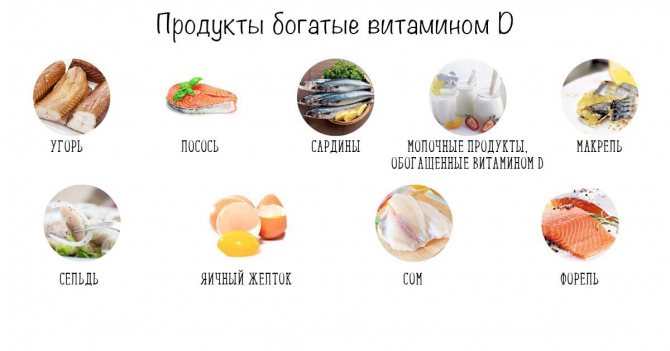
How to take vitamin D while breastfeeding mother
You should not decide to take funds on your own, especially during breastfeeding. In this regard, it is necessary to consult a specialist. Before use, you should read the instructions. In no case should you exceed a certain dosage for breastfeeding. It is important to carefully monitor the body during the first days of use in order to prevent individual intolerance to some components of the drug. In addition, the active substances should be taken in a course, following all the instructions of the manufacturer and the attending physician.

